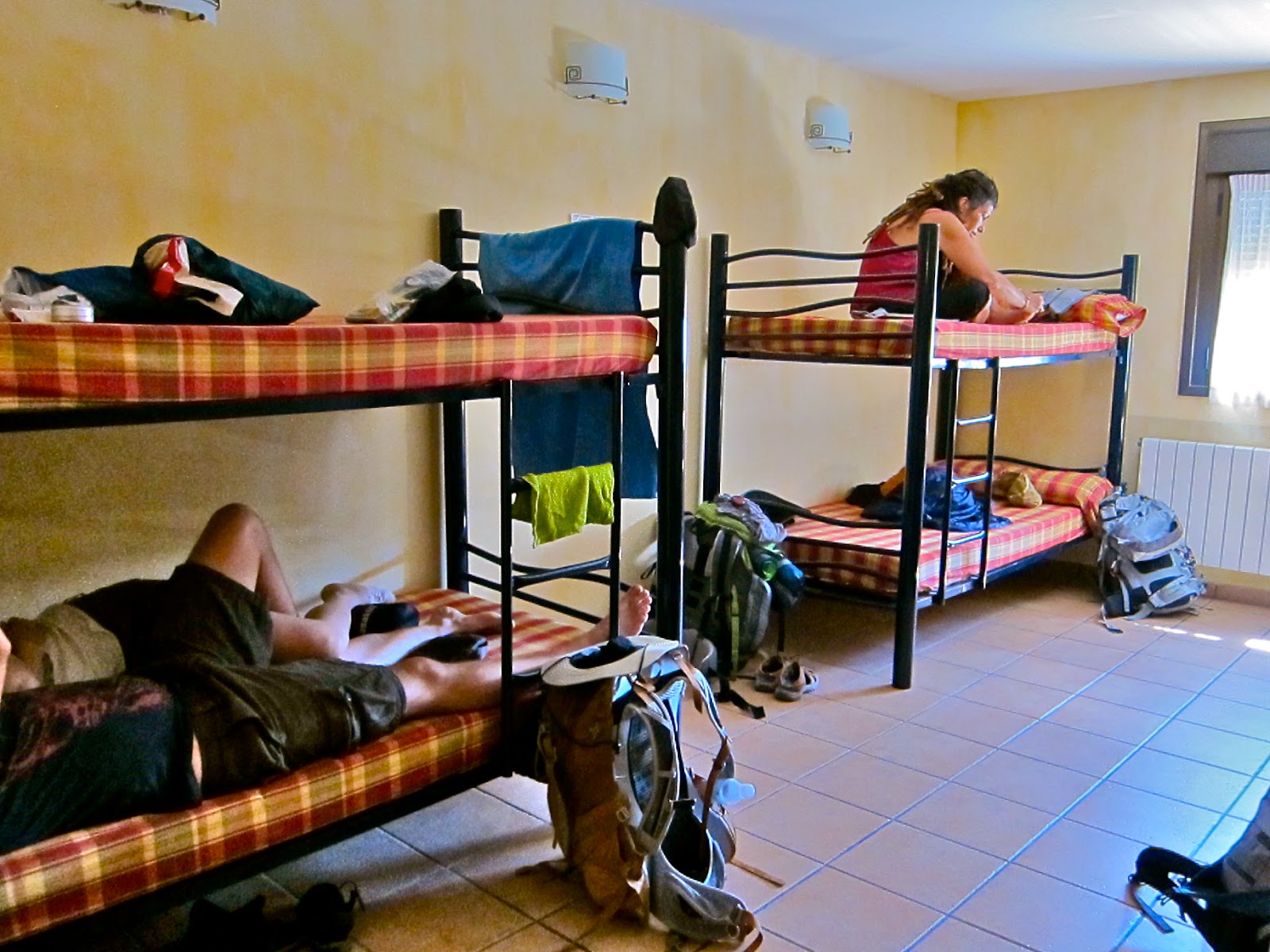 |
| Hanging the wash to dry .... which ones are mine? |
 |
| Early morning, heading west, ever west |
After a few days on the Camino, the pilgrim, or Peregrino / Peregrina in Spanish, finds a definite rhythm in the journey. Rise early, if possible, have breakfast, if not, lace up your boots, adjust your pack, and start walking. "The Way" is marked with yellow arrows, scallop shells (the symbol of the Camino), and various directional signs. Using a guidebook for a written description, you walk until it is time for coffee/breakfast/ snack or a break or lunch at a bar. No, not that kind of bar; Spanish bars serve coffee, sandwiches, and simple meals.



 |
| Crossing a freeway outside of Leon |
 |
| Sunday AM, on the Camino in Navarette, the center of town |
After walking enough for the day, you find a place to stay, typically a pilgrim albergue or small inn or the occasional hotel. Here, you leave your dusty boots at the door and proceed to your room (shared with 2 to 22 or more other noisy pilgrims). After showering, clothes are washed and hung to dry, then the hunt for food begins again. When available, the small local markets sell basic fruits, meats, breads and veggies, so a simple meal can be purchased. Some albergues have kitchen facilities available, a few will offer a communal meal. The bars typically offer a Pilgrim Dinner for a set price, which is usually soup or salad, an entree with french fries, a glass of local wine, bread, and dessert. The remainder of the day is taken up with any local sight seeing, visiting with other pilgrims, writing in a journal or internet if you can find it, then because of simple exhaustion, lights out by 8 or 9 pm. The next morning, repeat. And continue as long as needed for 500 miles.
Typical bunk beds in albergue
 |
| Typical pilgrim bar |
 |
| Waiting for the albergue to open |
 |
| Pilgrim boots at an albergue |














No comments:
Post a Comment